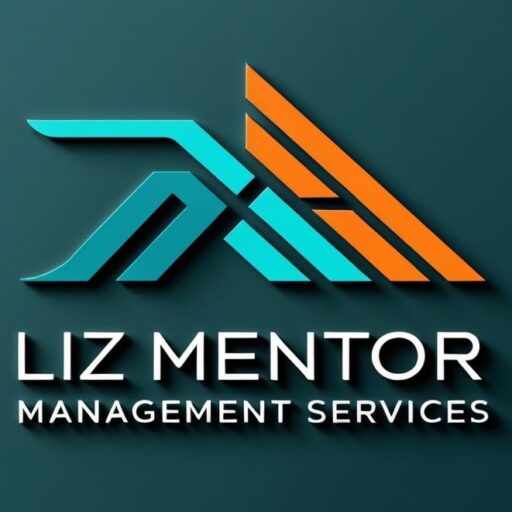Body Language in Business: How Non-Verbal Communication Drives Success
In business, communication extends far beyond words. The messages you convey with posture, gestures, facial expressions, and tone can shape perceptions, influence decisions, and determine outcomes. Body language in business is not just about looking confident—it’s about communicating effectively without saying a word.
Whether you’re leading a team, presenting to clients, or negotiating a deal, understanding and leveraging body language can create a professional edge. In this article, we’ll explore the critical role of non-verbal communication in business, practical strategies to improve your presence, and how to read and respond to the body language of others.
Why Body Language Matters in Business
Effective body language influences every aspect of professional life. While words convey information, your non-verbal signals communicate trust, confidence, and engagement. In high-stakes environments, these subtle cues can make the difference between success and missed opportunities.
Consider these scenarios:
A manager giving feedback with open posture and steady eye contact will inspire receptivity and trust.
A salesperson presenting with confident gestures and an animated posture can energize a client and boost engagement.
A leader who mirrors the body language of their team fosters connection, collaboration, and loyalty.
By mastering body language, professionals can enhance relationships, reinforce messages, and increase influence across all workplace interactions.
Communicating with Power
In business, body language is a tool for projecting authority and confidence. Small adjustments in posture, gestures, and facial expressions can transform how others perceive you.
Posture: Stand or sit upright with shoulders relaxed. Avoid slouching, which can convey disinterest or insecurity.
Gestures: Use controlled hand movements to emphasize points. Avoid fidgeting, which can suggest nervousness.
Facial Expressions: Smile when appropriate to convey approachability, but ensure expressions match the message.
Eye Contact: Maintain steady, natural eye contact to signal engagement and honesty.
These adjustments create a presence that commands attention without dominating, making your message more persuasive and memorable.
Understanding Cultural Differences
In today’s global business environment, body language is not universal. Gestures, personal space, and expressions vary across cultures, and misreading them can lead to misunderstandings.
For example, a firm handshake is a sign of confidence in many Western cultures, while in some Asian cultures, a gentler handshake or bow is preferred. Similarly, eye contact may signal honesty in one culture and disrespect in another.
Professionals must be aware of these differences to communicate effectively and respectfully. Awareness and sensitivity to cultural norms ensure that your non-verbal communication enhances connections rather than creating barriers.
Building Trust Through Body Language
Trust is the foundation of successful business relationships, and body language plays a pivotal role. Open posture, steady eye contact, and consistent gestures signal honesty and integrity. Conversely, closed body language, like crossed arms or avoiding eye contact, can create suspicion or doubt.
Leaders who use body language to reinforce credibility and reliability cultivate trust within teams, with clients, and across organizations. For example, a manager addressing a sensitive issue with calm posture, measured gestures, and attentive listening demonstrates empathy and professionalism, fostering stronger engagement and cooperation.
Mirroring: Creating Connection and Rapport
One powerful tool in business body language is mirroring, or subtly reflecting the gestures, posture, or tone of the person you’re interacting with. Mirroring fosters connection and creates a sense of understanding, which can:
Enhance rapport with colleagues and clients
Facilitate negotiations and problem-solving
Encourage collaboration in teams
For example, during a client meeting, adopting a similar posture or tone can make the client feel understood and comfortable, increasing the likelihood of positive outcomes. However, mirroring must be subtle; exaggerated imitation can appear inauthentic.
Practical Tips for Body Language in Business
Project Confidence: Stand tall, maintain open posture, and control gestures to signal authority.
Align Words and Actions: Ensure that non-verbal cues reinforce what you say. Mixed messages erode trust.
Be Mindful of Facial Expressions: Smiles, frowns, and micro-expressions convey emotion and intent.
Observe Others: Pay attention to the body language of colleagues, clients, and superiors to adapt communication strategies.
Respect Personal Space: Understanding proxemics ensures comfort and fosters positive interactions.
Practice Consistency: Consistency between verbal and non-verbal signals builds credibility and professional presence.
Applying these tips strengthens communication, enhances workplace relationships, and increases professional influence.
Case Study: Body Language in a Client Presentation
Consider a marketing manager presenting a new strategy to a client. In the first scenario, the manager speaks confidently but maintains a closed posture, avoids eye contact, and frequently fidgets. The client senses uncertainty, and the presentation fails to persuade.
In the second scenario, the manager stands tall, uses deliberate hand gestures to emphasize points, maintains steady eye contact, and smiles naturally. The client perceives confidence and competence, engages actively, and ultimately approves the proposal.
This demonstrates that how you present yourself non-verbally can be as impactful as the content of your message.
Leveraging Body Language in Leadership
Leaders who master body language can inspire, motivate, and influence more effectively. Key strategies include:
Using open posture to signal approachability
Nodding and maintaining eye contact to show attentiveness
Using deliberate gestures to reinforce key points
Adapting signals to match team dynamics and emotional tone
By consciously managing non-verbal communication, leaders create environments of trust, collaboration, and engagement. Employees respond not only to words but also to the authenticity conveyed through posture, gestures, and expressions.
Common Mistakes to Avoid
Even seasoned professionals can misstep with body language:
Overly Closed Posture: Arms crossed, slouched shoulders, or turned-away bodies signal disengagement.
Excessive Fidgeting: Tapping, playing with objects, or shifting weight frequently conveys anxiety.
Inconsistent Signals: Smiling while giving critical feedback or nodding while expressing disagreement creates confusion.
Ignoring Audience Cues: Failing to observe the reactions of colleagues or clients reduces influence and connection.
Awareness and practice are key to avoiding these pitfalls.
Final Thoughts
Body language in business is a silent but powerful tool that shapes professional success. It influences perception, builds trust, and enhances communication in every interaction—from team meetings to client presentations and leadership engagements.
By mastering posture, gestures, facial expressions, and mirroring techniques, professionals can communicate with confidence, create stronger connections, and achieve better outcomes. Non-verbal communication is not just an accessory to words; it is central to professional presence and influence.
In today’s competitive workplace, those who understand and leverage body language gain a strategic advantage—projecting authority, fostering trust, and leaving a lasting impression in every professional scenario.



